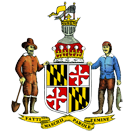| Habeas corpus case in Baltimore concerning young black men "alleging that they were illegally detained on the schooner Wm. Spear, Capt. John B. Lewis, with the intention on the part of sasid Lewis to ship them on a voyage to Nevassa Island, as laborers and servants, to be engaged there in the occupation of digging guano..." (Sun, 9 November 1867).
The following is all that has been located about the case -
BALTIMORE CITY CRIMINAL COURT
(Criminal Docket)
Dates: 1867/09-1867/12
Description: i
Accession No.: 50,334-35
MSA No.: C1849-35
Location: 3/30/1/11
I found to entries on page 132, State v. Henry Richardson (who was black) and State v. Charles Frey. Richardson was charged with kidnapping and fraudulently arresting John Barber, "knowing him to be a free person, with intent to have him carriedout of the State." Frey faced the same charges in relation to the kidnapping of John Green. Richardson was found not guilty and Frey's charges were placed on stet. Therefore, the case could not have been appealed. The newspaper article lists three other young men who had filed the petition, Samuel Drummond, Charles Freeland, and William Clarke, however, I found no mention of them.
Richardson, Barber and Green are also found on p. 230 of:
BALTIMORE CITY JAIL
(City Criminal Docket)
Dates: 1866-1868
Description: *
Accession No.: 6672
MSA No.: C2057-6
Location: 2/72/1/29
Richardson was being held on the kidnapping charges, while Barber and Green were being held as witnesses. All were released on November 29, 1867.
There are no court papers for this time period, and I found no mention in the mintues.
Background information about the island and mining operations -
Laws about Navassa Island and guano islands generally are available on the LOC'S Century of Lawmaking site. The US claimed Navassa Island in 1857. A history of the mining of Navassa Island is available at:http://business.fortunecity.com/ziff/739/navassa/mining.html. It notes that the first miners on the island were convicts from Baltimore. Slaves were later brought in and after the Civil War free black laborers were used. However, "Even after the Civil War the blacks were treated as slaves. Documents prove that they were harassed, beaten and even killed if they complained about the poor living and working conditions." The history is also detailed in The Great Guano Rush: Entrepreneurs and American Overseas Expansion by Jimmy M. Skaggs. The USGS conducted a survey of the island in the late 90s. Maps and photographs of the island are available at: http://coastal.er.usgs.gov/navassa/.
Tensions on the island between the black laborers and whites who ran the mining operation came to a head 1889 when a riot broke out. The "Navassa Island Incident" is detailed at: http://www.globalsecurity.org/military/ops/navassa-island.htm. The basic story is:
Abusive conditions soon provoked a race riot and the workers hacked off the arms, legs and heads of some of the whites. Others had their heads bashed in with crowbars and axes. It was a bloody scene and it lasted over one hour. At the end of the battle, Five white supervisors were dead and others injured. US warships, including the brig Romance, gathered up the people and bodies and took them back to Baltimore. At the island of Navassa 06 October 1889, USS Galena took on board nine ring-leaders of the riot, then proceeded to Baltimore, MD, where they were turned over to the custody of the United States marshal 25 October 1889. A total of eighteen of the workers were returned to Baltimore for three separate trials on murder charges. An African-American fraternal society, the Order of Galilean Fisherman, raised money to defend the miners in federal court. Three of the miners were scheduled for execution in the spring of 1891, but a grass-roots petition drive by black churches, also signed by white jurors from the three trials, moved President Benjamin Harrison to commute the sentences to imprisonment.
There was a US Supreme Court case in 1890 (Jones v. State, 137 U.S. 202) concerning this case and the murder charges brought against the workers. Everett Waring was an attorney on the case. Through this case he is credited with being one of the first African Americans to argue a case before the US Supreme Court (http://www.law.howard.edu/alumni/legalgiants/huslgiantdec2k3.htm).
|
